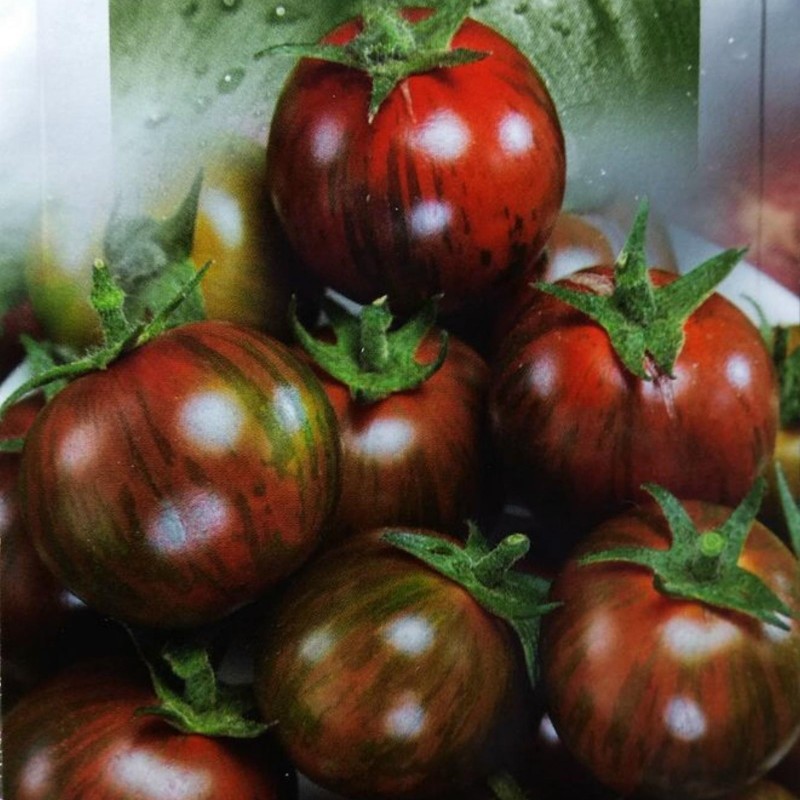

Great salad, slicing, and sauce tomato because of its rich flavor. Black Vernissage Tomato Seeds (Golf Ball size, 25 seeds). deep mahogany with green stripes tomato is a beauty and very productive. There are perfect for rich tasting sauces. Black Vernissage Tomato 3.50 Lycopersicon lycopersicum This 2-3 oz.

tomato, along with its other Vernissage cousins is sure to make a big splash in the garden as well as the kitchen. Schwartz, Colorado State University, Bugwood. Here is a lovely 'Black' tomato that is loaded with flavor as well as production. The spores can survive in the soil for up to 7 years. If any plants start to show symptoms of partial wilting you should remove them immediately to reduce the spread of this disease. Mulch can also help by keeping the soil cool. Watering Applying reasonable amounts of water regularly during the plant’s growth can help it maintain constant health. Once pollination occurs by insects or self-pollination, the striking tomatoes will appear. This plant produces stems and leaves similar to most tomatoes and has beautiful one-inch yellow flowers that bloom. To obtain more sunshine throughout the day, strive to maintain your container tomato plants facing south. Black vernissage tomatoes can grow to four to eight feet outdoors in the right conditions. To minimize its effects you should keep the plants well fed and watered. Black vernissage tomatoes grow best in nutrient-rich, well-drained soil. Fusarium Wilt is most problematic in warm and wet conditions. Many of the older heirlooms don’t have any resistance, so if you grow these then you should keep an eye out for it. If you stick with resistant varieties you don’t have to worry about it either. Fusarium is rarely a problem for commercial growers because most modern tomato varieties have been bred to be very resistant. Plants don’t always die, but it slows growth and reduces yields. Eventually the infection spreads through the whole plant, lower leaves turn yellow (and may eventually die) and the stem becomes discolored. The first indication of infection is when a part of the plant starts to wilt on sunny afternoons, though it usually recovers when the temperature drops (this often starts to happen when plants begin bearing fruit). It enters a plant through natural openings and wounds in the roots and grow up into the stem, where it blocks the supply of nutrients and water to the leaves. This fungal disease most often affects tomatoes, but may also be found on eggplant, peppers, potatoes, peas and squash family crops.


 0 kommentar(er)
0 kommentar(er)
